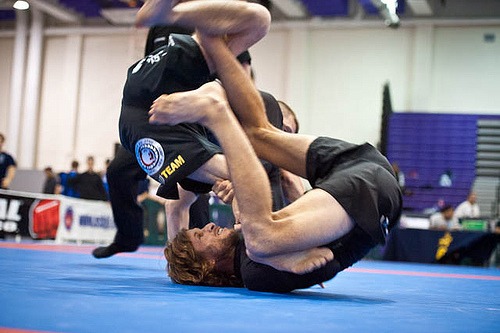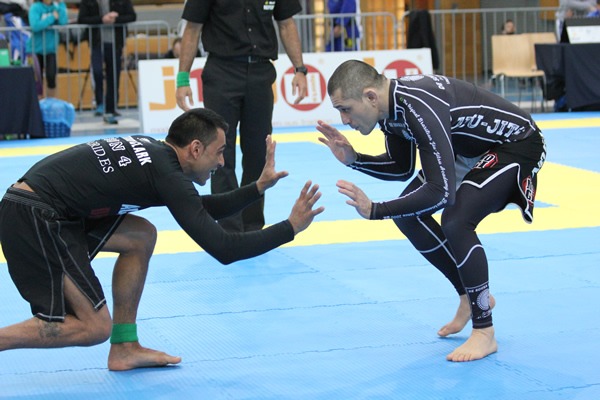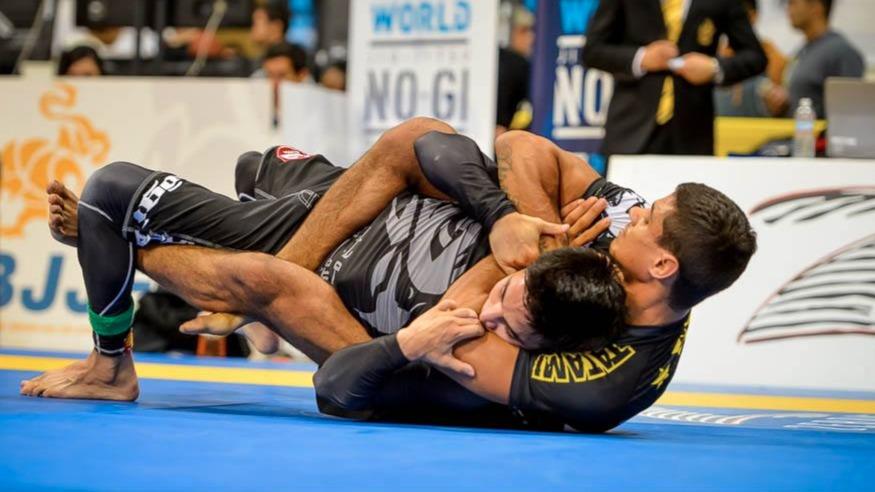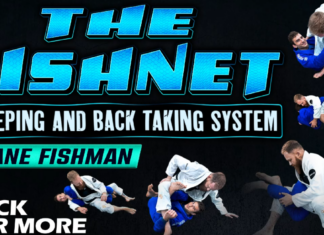
Brazilian Jiu-Jitsu is an art that offers variety in every aspect of training. From training with all level partners to come up with your own moves and even training in different “uniforms”. All of these have their benefits for grapplers, but nothing is more important than being able to grapple in every circumstance. That means training No-Gi BJJ even if you’re at a die-hard Gi academy. There is a reason why No-Gi BJJ is such a huge part of the sport. it yields results and makes people better overall grapplers. Do not shy away from No-Gi BJJ just because you’re more used to training with the Gi.
If you training BJJ, but do not like to train No-Gi BJJ, then you’re going to progress at a slow rate. To be completely honest, the argument goes both ways. If you train solely No-Gi, you need to consider enrolling in Gi classes as well. Does Jiu-Jitsu work if you train in only one of these two major aspects? Of course, it does, but not as nearly as effective as it has the potential to. Every world-class black belt champion is well versed in No-Gi, despite some of them competing solely in the Gi. As with everything else in the Gentle Art, training without a kimono has its place and benefits.
Similar to Dean Lister’s now famous statement of not ignoring 50% of the human body, why would you ignore 50% of BJJ training? No-Gi BJJ is a huge part of Jiu-Jitsu, whether you like it or not. Give No-Gi BJJ training a try and you won’t regret it. Take it from someone who speaks from experience. I was the biggest advocate for Gi-only training for a while. Until I stumbled upon No-Gi BJJ and discovered how true progress in BJJ is achieved.
Lachlan Giles knows all about choking people without the Gi. Check out his amazing instructional “High Percentage Chokes: No-GI” and learn a whole arsenal of effective chokes. A a bonus, they all work in the Gi just as effectively.
The Dual Nature Of BJJ
In essence, Brazilian Jiu-Jitsu is all about manipulating an opponent into submission, normally, against their will. This means that the art is all about control over the opponent’s body. The way you gain this control is via a system of levers utilizing specific points of the opponent’s body. Once you have control, You need to make sure you maintain it while you change your points of leverage in order to get a submission victory. As crude as this explanation is, it encompasses the nature of BJJ in a nutshell.
In Jiu-Jitsu, there are two main ways of training and competing. One is the “traditional” way of training, which includes wearing a Gi while doing so. This is the way that the founders trained and competed in and is the way BJJ was presented to the world. Gi BJJ involves using the cloth as a means to gain further control and improve leverage. To that extent, there are complex systems of sweeping, passing and/or submitting completely relying on the Gi.
In the opposite corner is No-Gi BJJ. How this Jiu-Jitsu “discipline” came to be is not really clear. After all, wrestlers have been training without kimonos for centuries prior to BJJ. If you ask me, the most logical explanation is the most simple one. Grapplers in Brazil used to train without a Gi jacket when summers got too hot. Add to that the struggles of a few grappling legends like Jean Jacques Machado that due to medical conditions couldn’t grab an use the Gi and you No-Gi BJJ was born. Today, training No-Gi BJJ involves people grappling in just shorts, or, more often, a rashguard and spats. In any case, the leverage points provided by the Gi are absent, leading to modifications in most major techniques.
Common Reasons For Avoiding No-Gi Training
For people that train exclusively in one of these disciplines, training in the other is often not even a consideration. This kind of dedication is admirable, however, completely illogical. Why avoid a huge part of the sport that is only going to make you better? Well, there are a few main reasons behind this.

Another huge reason people avoid No-Gi training (or Gi from an opposite point of view) is an experience. Training solely with the Gi, means you’ll suck at No-Gi when you give it a try. The more experience you have with the Gi, the worse you’ll feel trying No-Gi. After surviving the first few months of BJJ and progressing most people do not like the feeling of being back at the beginning again. However, this is something you must face in order to improve, Even more importantly, your No-Gi progress is going to be much faster than your initial Gi progress.
Finally, there’s the competition aspect. Gi and No-Gi BJJ competition rules differ significantly, leading people to shun training in order to make things simple. As valid as this is, you can always roll No-Gi while applying Gi rules.
Benefits Of No-Gi BJJ
To cap things off let’s explore some of the obvious benefits No-Gi BJJ offers Jiu-Jitsu players. As already covered, jiu-Jitsu is all about leverage. From that standpoint, grabbing the Gi at the sleeves, pants, collars, and belt, provides great handles. The moment these are unavailable though, your effectiveness at controlling levers is also going to decrease. Training No-Gi is going to provide you with means of controlling an opponent just as effectively without depending on the Gi material. This is an obvious and beaten to death argument for No-Gi, but still a crucial one. Whenever that collar or sleeve is out of reach, other body parts are available, Why not use them?

What you’re also going to discover when training No-Gi is a wider array of submissions. For example, you might be really good at the Bow and arrow choke with the Gi. However, in No-Gi you’ll have to settle for a rear naked choke from the back. Now imagine attacking with the rear naked choke when in the Gi. Even if the opponent defends it, you’ll just transition to the collar and still get the Bow and arrow.
Grappling Mistakes: How Dehydration Makes You Weaker
Everything about BJJ Chokes – Systematization, Anatomy, Efficiency
Subtle Tricks For Developing World-Class BJJ Chokes


![Darce Choke Encyclopedia – Origins, Mechanics and Variations [2025] BJJ, choke, Brabo, BJJ Darce Choke, D'arce Choke, Darce BJJ Choke](https://bjj-world.com/wp-content/uploads/2017/11/JungPoirierLeeYahoo-218x150.jpg)










![Slicin’ Calves Mikey Musumeci DVD Review [2025] Slicin' Calves Mikey Musumeci DVD Review](https://bjj-world.com/wp-content/uploads/2025/04/slicin-calves-mikey-musumeci-dvd-review-218x150.png)
![Jiu-Jitsu For Old Guys Guard Retention Bernardo Faria DVD Review [2025] Jiu-Jitsu For Old Guys Guard Retention Bernardo Faria DVD Review](https://bjj-world.com/wp-content/uploads/2025/03/old-guys-guard-retention-bernardo-faria-dvd-review-218x150.png)
![X-Guard Trickery Kyle Sleeman DVD Review [2025] X-Guard Trickery Kyle Sleeman DVD Review](https://bjj-world.com/wp-content/uploads/2025/03/x-guard-trickery-kyle-sleeman-dvd-review-218x150.png)
![Countering with Crab Ride Anthony Budion DVD Review [2025] Countering with Crab Ride Anthony Budion DVD Review](https://bjj-world.com/wp-content/uploads/2025/03/countering-with-crab-ride-anthony-budion-dvd-review-218x150.png)
![Closet Closed Guard Craig Jones DVD Review [2025] Closet Closed Guard Craig Jones DVD Review](https://bjj-world.com/wp-content/uploads/2025/03/closet-closed-guard-craig-jones-dvd-review-218x150.png)


![Baseball Chokes From Everywhere Magid Hage DVD Review [2025] Baseball Chokes From Everywhere Magid Hage DVD Review](https://bjj-world.com/wp-content/uploads/2025/01/baseball-chokes-from-everywhere-magid-hage-dvd-review-100x70.png)

![Front Head Lock Kaynan Duarte DVD Review [2025] Front Head Lock Kaynan Duarte DVD Review](https://bjj-world.com/wp-content/uploads/2025/02/front-head-lock-kaynan-duarte-dvd-review-100x70.png)


![Shoulder Lock Mastery Zach Green DVD Review [2025] Shoulder Lock Mastery Zach Green DVD Review](https://bjj-world.com/wp-content/uploads/2024/12/shoulder-lock-mastery-zach-green-dvd-review-100x70.png)
![Charles Allan Price Building Workouts For BJJ DVD Review [2024] Charles Allan Price Building Workouts For BJJ DVD Review](https://bjj-world.com/wp-content/uploads/2024/09/charles-allan-price-building-workouts-for-bjj-review-100x70.png)

![Dima Murovanni Kill The Collar Tie BJJ Trendsetters DVD Review [2024] Dima Murovanni Kill The Collar Tie BJJ Trendsetters DVD Review](https://bjj-world.com/wp-content/uploads/2024/09/dima-murovanni-kill-the-collar-tie-dvd-review-100x70.png)

![Shin to Shin Eoghan O’Flanagan DVD Review [2025] Shin to Shin Eoghan O'Flanagan DVD Review](https://bjj-world.com/wp-content/uploads/2024/12/shin-to-shin-eoghan-oflanagan-dvd-review-100x70.png)
![Flow Pressure Kauan Barboza DVD Review [2025] Flow Pressure Kauan Barboza DVD Review](https://bjj-world.com/wp-content/uploads/2025/02/flow-pressure-kauan-barboza-dvd-review-100x70.png)
![How To Knee Cut Junny Ocasio BJJ DVD Review [2025] How To Knee Cut Junny Ocasio BJJ DVD Review](https://bjj-world.com/wp-content/uploads/2025/02/how-to-knee-cut-junny-ocasio-bjj-dvd-review-100x70.png)
![No-Gi Defense Xande Ribeiro DVD Review [2024] No-Gi Defense Xande Ribeiro DVD Review](https://bjj-world.com/wp-content/uploads/2024/11/no-gi-defense-xande-ribeiro-dvd-review-100x70.png)

![Knee Lever John Wayne Sweep Adam Wardzinski DVD Review [2024] Knee Lever John Wayne Sweep Adam Wardzinski DVD Review](https://bjj-world.com/wp-content/uploads/2024/12/john-wayne-sweep-adam-wardzinski-dvd-review-100x70.png)
![Jiu-Jitsu For Old Guys Guard Retention Bernardo Faria DVD Review [2025] Jiu-Jitsu For Old Guys Guard Retention Bernardo Faria DVD Review](https://bjj-world.com/wp-content/uploads/2025/03/old-guys-guard-retention-bernardo-faria-dvd-review-100x70.png)
![Feet Finder Foot Sweeps Christian Ozbek DVD Review [2024] Feet Finder Foot Sweeps Christian Ozbek DVD Review](https://bjj-world.com/wp-content/uploads/2024/09/feet-finder-foot-sweeps-christian-ozbek-dvd-review-100x70.png)
![Power Passing Body Locks Dan Manasoiu DVD Review [2025] Power Passing Body Locks Dan Manasoiu DVD Review](https://bjj-world.com/wp-content/uploads/2025/01/power-passing-body-locks-dan-manasoiu-dvd-review-100x70.png)
![Position And Submission Escapes Craig Funk DVD Review [2025] Position And Submission Escapes Craig Funk DVD Review](https://bjj-world.com/wp-content/uploads/2025/02/position-and-submission-escapes-craig-funk-dvd-review-100x70.png)

![Woj Lock the World Chris Wojcik Ankle Locks DVD Review [2024] Woj Lock the World Chris Wojcik Ankle Locks DVD Review](https://bjj-world.com/wp-content/uploads/2024/12/woj-lock-the-world-chris-wojcik-dvd-review-100x70.png)
![Front Headlock and Turtle Escapes Brian Glick DVD Review [2024] Front Headlock and Turtle Escapes Brian Glick DVD Review](https://bjj-world.com/wp-content/uploads/2024/11/headlock-and-turtle-escapes-brian-glick-dvd-review-100x70.png)
![Efficiently Executing X-Guard Giancarlo Bodoni DVD Review [2024] Efficiently Executing X-Guard Giancarlo Bodoni DVD Review](https://bjj-world.com/wp-content/uploads/2024/09/efficiently-executing-x-guard-giancarlo-bodoni-dvd-REVIEW-100x70.png)
![Reverse De La Riva System Mikey Musumeci DVD Review [2024] Reverse De La Riva System Mikey Musumeci DVD Review](https://bjj-world.com/wp-content/uploads/2024/11/reverse-de-la-riva-system-mikey-musumeci-dvd-review-100x70.png)

![Giancarlo Bodoni DVD Bundle Essential Connections Full Review [2024] Giancarlo Bodoni DVD Bundle Essential Connections Full Review](https://bjj-world.com/wp-content/uploads/2024/09/giancarlo-bodoni-dvd-bundle-essential-connections-100x70.png)
